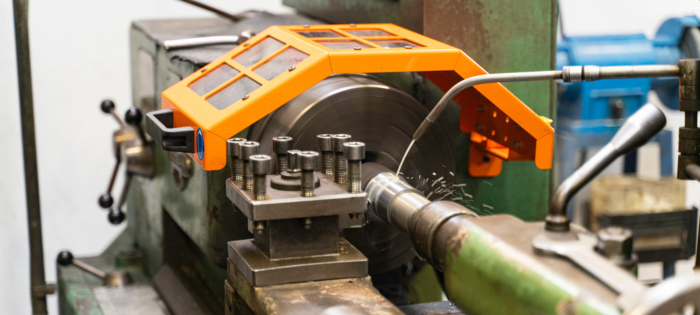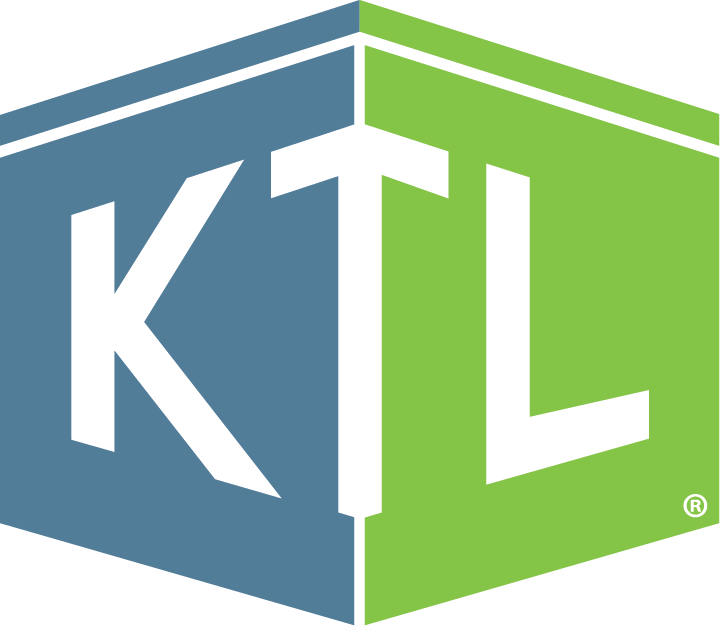
Safety
Comments: No Comments
Safe + Sound Week
Machine guarding consistently ranks among the Occupational Safety and Health Administration’s (OSHA) top 10 safety violations. While generally toward the bottom of the top 10, machine hazards are not to be ignored, as they often result in serious injury, amputation, or even death. Machine guarding is crucial for preventing injuries such as these.
Contrary to what many believe, machine guarding is not just a manufacturing issue—it is a fundamental safety control across a wide range of industries, including food processing, warehousing, logistics, packaging, printing, and even some service sectors. Despite the diversity of equipment and processes in these industries, the principles of machine guarding—protecting workers from points of operation, moving parts, and flying debris—apply universally.
Background on Machine Guarding
29 CFR 1910.212 outlines requirements for machinery and machine guarding. According to OSHA, any machine part, function, or process that may cause injury must be safeguarded. Machine guarding refers to those physical barriers, protective devices, awareness barriers, or other safety mechanisms that protect workers from hazards created by moving machine parts.
While some may argue that the Machine Guarding Standard is intentionally vague to apply to the various machine types and configurations used throughout industry, the regulations specify the following requirements:
- Employers must ensure machines are equipped with one or more types of guards (e.g., fixed, interlocked, adjustable, self-adjusting, etc.) that prevent access to hazardous areas while the machine is in operation.
- Machines with moving parts that perform cutting, shearing, punching, or pressing operations must have securely fixed guards that cannot be easily tampered with or removed to prevent employees from contacting the point of operation.
- Workers must be protected from hazards associated with power transmission components (i.e., accidental contact and entanglement with belts, gears, chains, pulleys, etc.).
- Machines must be equipped with emergency stop devices to quickly shut down equipment in an emergency or when a hazard is detected.
- Workers must be trained in safe machine operation, how to recognize hazards, and effective use of machine guards. Regular maintenance and inspection of machine guards are also essential.
Machine guarding is a priority for OSHA, with two National Emphasis Programs (NEPs) aimed specifically at addressing machine hazards and numerous Regional Emphasis Programs (REPs) that are focused in some part on enforcing the Machine Guarding Standard.
Best Practices to Realize Benefits
Machine guards are intended to protect employees. When appropriately implemented, they can not only help reduce injury, but they may also contribute to maintaining regulatory compliance, improving employee productivity, fostering a positive safety culture, and enhancing overall morale.
The following best practice strategies can help organizations in any industry realize these benefits:
- Identify Hazards: A hazard/risk assessment is crucial for identifying all potential hazards associated with each machine. The assessment starts by generating a list of all machines and then identifying any rotating gears, cutting blades, belts, pinch-points, and other dangerous components that could cause harm if not properly guarded. In addition to a general hazard assessment, facilities should also consider regularly conducting the following:
- A Task Hazard Assessment (THA) is a pre-job inspection to evaluate job-specific hazards and ensure appropriate safety precautions, controls, operator training, and other preventive measures are in place prior to job startup. A THA is intended to verify the proper function and design of machine guarding devices before every work shift.
- A Job Safety Analysis (JSA) analyzes potential hazards at each job step that could be introduced by tools, equipment, work practices, or the work environment. JSAs should be performed for all positions before work begins to clearly identify, assess, and implement effective machine design and hazard controls for specific jobs.
- Use Consensus Standards: Consensus standards, such as those developed by the American National Standards Institute (ANSI), provide valuable guidance for understanding and implementing effective machine guarding. These standards are developed by industry experts and stakeholders to reflect current best practices and technological advancements. While not always legally binding, they are often referenced by regulatory bodies like OSHA and can serve as a benchmark for evaluating the adequacy of guarding on specific types of equipment. Using these standards helps facilities identify appropriate guard types, placement, and operational safeguards; ensure workers are protected from hazardous moving parts; and maintain operational efficiency.
- Select, Customize, and Install Machine Guards: Appropriate guards need to be selected and implemented based on the risk assessment. Guards should be suitable for the specific machine and operation and carefully evaluated for ease of use, durability, and level protection. Customization may be required to ensure guards fit the specific operations and provide adequate protection while not compromising efficiency. The effectiveness of the machine guard relies on proper installation. This is not the time to throw away the manufacturer’s guidelines! Adhere closely to instructions to ensure guards are installed and integrated seamlessly with their machinery.
- Develop Proper Procedures: Document the procedures employees must follow when operating machinery. These written procedures should outline how to safely operate equipment, document identified hazards and the associated controls that are in place to protect employees, establish safe practices for equipment maintenance and repair, provide training requirements, etc.
- Train Staff: All workers should be trained in safe machine operation and guard use. Training should cover all points of the written procedure described above, including potential hazards and the essential functions of guard. Importantly, training should emphasize the importance of not bypassing or disabling guards under any circumstances. In addition to understanding safe machine operations, employees should be trained to identify safe and unsafe employee behavior. Many machine guarding-related injuries occur due to unsafe behaviors vs. unsafe equipment, such as bypassing machine guards, performing quick maintenance without following machine guarding procedures, or ignoring procedures to get the job done faster. Employees should be empowered to report this behavior.
- Conduct Inspections, Maintenance, and Monitoring: Once a guard is in place, regular maintenance and inspections will help ensure they remain effective. A Maintenance Program should:
- Establish regular inspection and maintenance schedules.
- Identify and assign qualified inspectors/personnel with appropriate training.
- Develop inspection checklists for each machine/machine guard configuration, integrating requirements from OSHA’s Machine Guarding Standard.
- Create a mechanism to quickly report and respond to findings/nonconformances and assign corrective actions.
- Capture, document, and report machine hazards and unsafe behaviors so others can learn from them.
Prevention Is Key
Don’t wait for an accident to expose a preventable hazard—inspect your machines regularly and ensure guards are properly installed, maintained, and, importantly, never bypassed. Prioritize machine guarding as a core element of your Safety Program to protect your employees, reduce liability, and stay compliant with OSHA regulations.rogram to protect your employees, reduce liability, and stay compliant with OSHA regulations.
